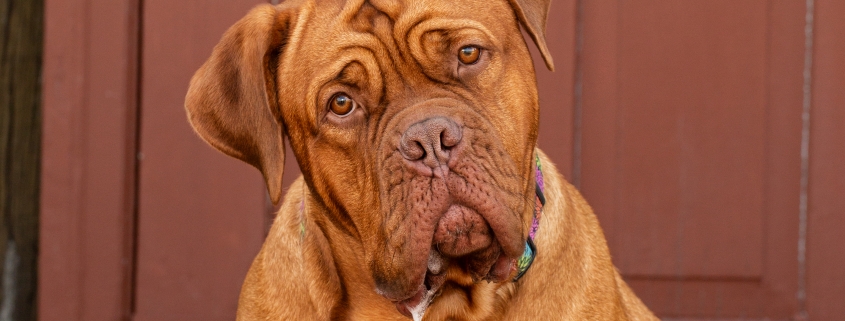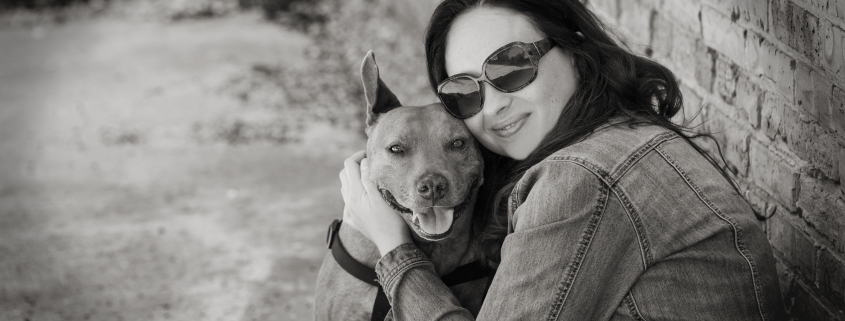-

-
Sallie
-

-
Bud Nelson
-

-

-
Bluey
-

-
Stubby
-

-
Rin Tin Tin
-

-
Toto
-

-
Chips
-

-
Balto
-

-
Laika
-

-
K9
-

-
Roselle
By CHERESE COBB
Because dogs live in the present. Because they don’t hold grudges. Because they let go of all their anger daily, hourly and never let it fester, they’ve become man’s best friend. Whether they’re famous for lighting up the silver screen or pulling soldiers from the trenches, for one reason or another, these 13 dogs have earned their place in history.
1. Sallie
The canine mascot for the 11th Pennsylvania Volunteer Infantry during the Civil War, Sallie Ann Jarrett was a brindle Staffordshire Bull Terrier. She was given to Lt. William R. Terry when she was just four weeks old. She adapted quickly to army life, joining the soldiers during their drills and on the frontlines of the battlefield. During the first day of fighting at Gettysburg, she was separated from her platoon when they retreated to Cemetery Hill. Three days later, they found her guarding her wounded and dead companions. On February 6, 1865, at Hatcher’s Run, she was struck by a bullet to the head and killed instantly. Despite being under heavy fire, several soldiers put aside their weapons to bury her on the spot.
2. Bud Nelson
On May 23, 1903, Dr. Horatio Nelson Jackson and Sewall Crocker slid into the front seat of a gleaming, cherry-red Winton and made the first-ever cross-country automobile trip. They took out the backseat, loaded it with tools, extra gas, and provisions, named it Vermont, and raced to get from the West back East. Along the way, they added a third party to the car: a Pit Bull Terrier named Bud, who was bought for $15 and outfitted with goggles to keep the dust, smoke and noxious fumes out of his eyes. Riding shotgun, he learned to watch the road ahead as intently as Jackson and Crocker did, bracing himself for every bump and turn—and becoming, his owner said, “the one member of [our] trio who used no profanity on the entire trip.”
3. Rover
On August 19, 1905, Rover became the first dog to play a major role in a motion picture. In the British silent film “Rescued by Rover,” the Border Collie saves his owners’ baby when she’s kidnapped from her nanny by a drunken beggar woman. Directed by Cecil Hepworth, the six-and-a-half minute film was so popular that he had to re-shoot it twice to keep up with demand. When Rover passed away, the film company put out a newsletter which announced, “This faithful animal had been Mr. Hepworth’s constant companion…and was the general pet of the studio at Walton-on-Thames.”
4. Bluey
Born on June 7, 1910, Bluey holds the title of the world’s oldest dog according to “The Guinness Book of World Records.” Owned by Les and Esma Hall of Rochester, Victoria, the Blue Heeler herded cattle and sheep until he was 20 years old. He also was fed a diet of kangaroos and emus. He was put down on November 14, 1939 at the age of 29 years, five months and seven days. In human years, he was roughly 223 years old.
5. Stubby
On a steamy July morning, Stubby wandered into Camp Yale, where members of the 102nd Infantry were training. He wasn’t an impressive sight: short, barrel-shaped and homely with brown and white brindled stripes. He lingered around the platoon, learning bugle calls, drills and even a modified dog salute, where he put his right paw on his right eyebrow. When Pvt. J. Robert Conroy’s squadron shipped out for France aboard the SS Minnesota, he hid the Pit Bull in a coal bin. On March 17, 1918, Stubby smelled mustard gas. He ran up and down the trenches barking and biting soldiers, waking them up and getting them to safety. He also captured a German spy, who was mapping out the positions of the allied trenches, by the seat of his pants and held on until his fellow soldiers arrived. He became the first–and only–military dog to be promoted to sergeant.
6. Rin Tin Tin
On September 15, 1918, in the small French village of Flirey, Corporal Lee Duncan found a severely damaged kennel. The only dogs left alive were a starving mother with a litter of five nursing puppies, their eyes still shut because they were less than a week old. When the puppies were weaned, Duncan gave the mother and three of her puppies to his comrades in the 135th Aero Squadron. He kept a male and a female, naming them after a pair of good luck charms called Rintintin and Nénette that French children often gave to the American soldiers. When he returned to San Francisco, California, Duncan trained Rin Tin Tin to perform silent film work. The dog went on to star in 27 Hollywood films. He also received a key to New York City from Mayor Jimmy Walker and his own star on the Hollywood Walk of Fame. Rin Tin Tin and Nanette produced at least 48 puppies. Their descendants have been trained as service dogs to provide assistance to special needs children.
7. Toto
Toto was played by a Cairn Terrier named Terry who appeared in over 10 Hollywood films. Born in Altadena, California, in 1933, she began acting after her anxiety led to one too many accidents inside of her owner’s house. She was eventually coached by legendary trainer Carl Spitz who started the Hollywood Dog Training School in 1927. She earned a lucrative salary of $125 per week and did all of her own stunts. While on the set of “The Wizard of Oz,” an actor accidentally stepped on her paw. She recuperated at co-star Judy Garland’s house, returning to set just two weeks later.
8. _______ Can You Guess Who Is Missing?
9. Chips
Chips, a mix of German Shepherd, Collie and Husky, was sent into military service because he had bitten a garbage collector. Serving with the 3rd Infantry Division, he single-handedly attacked a hidden German gun nest during World War II (1935-1945), biting German soldiers and pulling a smoking machine gun from its base. According to his handler Pvt. John Rowell, Chips grabbed one of the Germans by his neck and dragged him from the pillbox. The K9 suffered burns and scalp wounds but was awarded the Silver Star, a Distinguished Service Cross, and a Purple Heart.
10. Balto
Balto, a Siberian Husky, was originally part of a dog team that transported supplies to miners. On January 21, 1925, several Inuit children in Nome, Alaska, were diagnosed with diphtheria; a deadly bacterial infection that causes a thick covering in the back of the throat. Anchorage, more than 600 miles away, was the closest place with a supply of lifesaving serum. A train transported the medicine part of the distance to Nenana. Then twenty mushers took part in a Pony Express-type relay on the Iditarod Trail. They battled against snow and ice that were measured in yards and winds that were sometimes strong enough to knock over both their dogs and their sleds. Balto led the final 53-mile sprint and became a symbol of teamwork, courage, tenacity, and hope—even when there seems to be no reason for it.
11. Laika
On November 3, 1957, Laika, a mixed-breed dog, became the first living creature in orbit when the USSR launched her into space aboard the Sputnik 2. Found wandering the streets of Moscow, she was trained by Dr. Vladimir Yazdovsky. Because the spacecraft was the size of a washing machine, he put her into smaller and smaller cages for up to 20 days at a time. “Laika was quiet and charming,” Yazdovsky wrote in his book chronicling the story of Soviet space medicine, “After placing her in the container and closing the hatch, we kissed her nose and wished her bon voyage…knowing that she would not survive the flight.” They planned to poison her dog food, but she died within seven hours—in sweltering heat and excruciating pain, as her heart pumped three times its normal rate.
12. K9
A robot dog from the 1960s British TV series Doctor Who, K9 was created in the 51st century by Professor Frederick Marius. He has a gun in his snout, a plunger in between his eyes, radar dishes for ears, and a mouth that produces ticker-tape printouts. The Time Lord’s sidekick refers to his traveling companions as “Doctor-Master” or “Mistress”. He answers their questions with a clipped “Affirmative!” or “Negative!” Programmed with all of the chess games since 1886, K9 can beat his owner in six moves. He also has thousands of human movies on his hard drive—which peppers his speech with 20th and 21st century English colloquialisms.
13. Roselle
On September 11, 2001, Michael Hingson, blind since birth, arrived for work at the World Trade Center’s Tower One. His guide dog, Roselle, settled into her usual post underneath his desk. At 8:46 am, he heard a tremendous boom, and the 1,368-foot tall building started to shudder violently, before slowly tipping, leaning over 20 feet. “While everything was happening, the explosion, the burning debris, the people in the conference room screaming, Roselle sat next to me as calm as ever,” says Hingson. “[From the 78th floor,] the thought hit me that I could be a guide. So I called out to everyone not to worry, that Roselle and I would lead the way,” he says. By the time they reached the sidewalk, Tower Two collapsed, sounding like a metal and concrete waterfall.
















